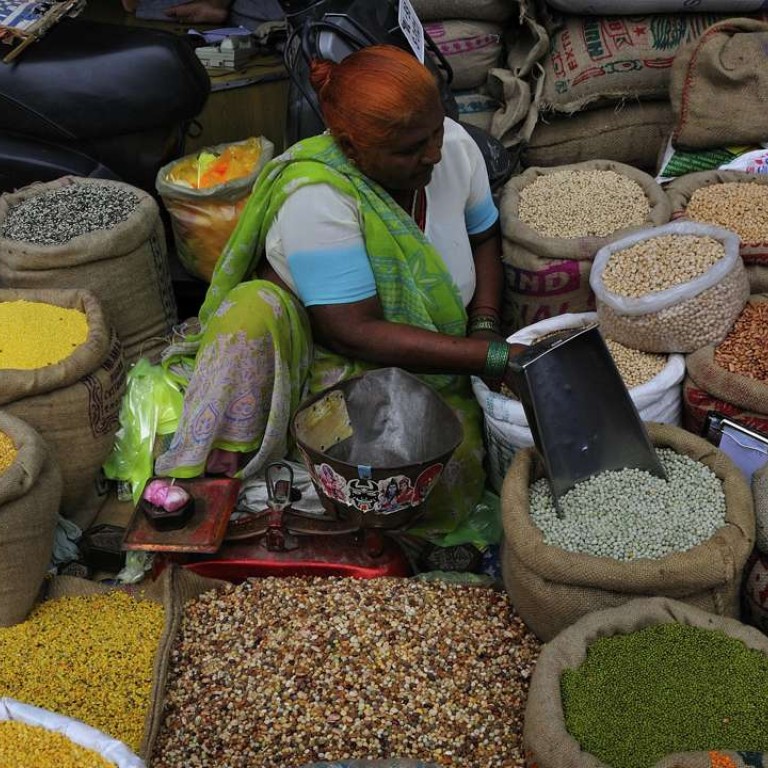
How Indians are embracing the superfoods all around them
While trendy Indians craved quinoa, West’s hipster cafes took an everyday Indian spice and popularised ‘health drink’ turmeric latte. Now Indian firms are looking at country’s regional diets in quest for a superfood to sell to world
For centuries, Indian mothers have been giving children who have a fever or cough a glass of hot milk with “haldi” turmeric) mixed in. No one ever talked about it as being worthy of note.
Now, turmeric latte is found in fashionable cafes and coffee bars abroad, where it is touted as a health drink. In a report on food trends in the US, Google revealed that searches for turmeric increased by 56 per cent from November 2015 to January 2016.

Like turmeric, many foods traditionally seen in India as being healthy could soon be packaged and marketed in the West as superfoods and become mainstream, much like the Andean crop quinoa.
The list of potential Indian superfoods is long: betel leaf, tamarind, millet, moringa (the extract of the drumstick leaf), jackfruit, millet, barley, jamun, amaranth, and coconut oil, to mention only a few.
Affluent Indians pay through the nose for quinoa in fashionable restaurants because the West has told them it is good for them without realising that lots of home-grown Indian alternatives to quinoa exist.

The Indian gooseberry called “amla”, for example, is a veritable vitamin C bomb. It is also high in antioxidants and apparently possesses anti-ageing properties. But there is no tasty drink or snack made with amla that is sold widely in grocery stores all over the country ... yet.
“Western consumers are eager to try new products and Western companies have the marketing skills to generate brands for a mass market. But in India, even coconut water, though a staple and sold on streets, has not emerged as a mass Indian brand, never mind a global brand,” Nayak says.
Indians who had started following more Westernised dietary habits are now returning to traditional foods
All this is changing, however, albeit slowly. Godrej’s Nature Basket, a chain selling primarily whole foods and gourmet items in the big cities, has seen demand for quinoa and flax seeds surging. Quinoa sales have doubled in the past month.
Maliks, a grocery store in New Delhi, has opened a separate floor dedicated to health foods and superfoods. “People are prepared to pay high prices for what is best for their health. This awareness is something new,” says the owner Rohit Malik, standing in front of shelves of chia seeds, amaranth, millet, and cold-pressed coconut oil.
Another popular new brand is Patanjali foods, manufactured by famous yoga guru Baba Ramdev and distributed all over India. If these food items are popular, it is mainly because they carry the healthy “Ayurvedic” tag.
A new awareness of the superfood potential of traditional Indian ingredients has also emerged among some consumers and manufacturers. Start-ups are getting off the ground but the trend is mostly embryonic.
“It will take time for a large Indian superfood brand to emerge,” says Nirmal Rayen, manager, menu applications with Kerry Ingredients which supplies seasonings and coatings to food manufacturers. “Indians who had started following more Westernised dietary habits are now returning to traditional foods. Some companies are seriously exploring the amazing superfood potential of ragi (Indian millet) which represents a huge opportunity. Moreover it’s so cheap that it is fed to horses in Australia.”
In addition to the older companies, such as Dabur and Himalaya, which have played to the strengths of traditional Indian ingredients, newer entrants such as Bangalore-based Soulfood have produced a range of food items using ragi.

In the Indian capital, Chandra Bhan Prasad, author and columnist, points out that millet has been a staple in the diet of impoverished dalits (members of the lowest Hindu caste) for centuries.
“They could not afford rice or wheat so they grew grains like barley and millet. The high castes gave them the worst land with no irrigation, so millet suited them because it grows easily. The Brahmins grew millet to feed their cattle. Dalits grew it to eat,” says Prasad.
In his research into dalit eating habits, Prasad realised that if dalits managed to survive their childhood, they often lived healthy and active lives into their 80s despite their poverty.

In Hyderabad, south India, a company that pioneered organic foods, 24 Mantra Organic, offers four different kinds of millet. Founder Rajashekar Reddy Seelam fondly calls millet “our own ancient grain”.

Celebrity nutritionist Rujuta Diwekar, based in Mumbai, says the Indian kitchen is packed with superfoods, an argument she develops in her new book Indian Superfoods, published in May.
“India and the developing world in general pretty much look down upon their native food and the wisdom around it. Things are changing now with people like Baba Ramdev and others trying to capture the market with their own products based using native ingredients that enjoy the long standing credibility and trust of the Indian consumer,” says Diwekar.
The challenge in India with developing a superfood sold across the country is the sheer diversity of the palate and food habits. A flavour that works in one region of one state will not work in another region. This immense diversity militates against the emergence of a mass brand.
“It is hard to single out just one dominant ‘global’ superfood in India such as quinoa. India already has many such well accepted foods, from traditional grains and spices to herbs and berries. In future, we will most likely see a whole range of superfoods coming out of India,” says Nayak.
And if any of these superfoods also happen to capture the imagination of foreign consumers, then they could become big. Very big.

